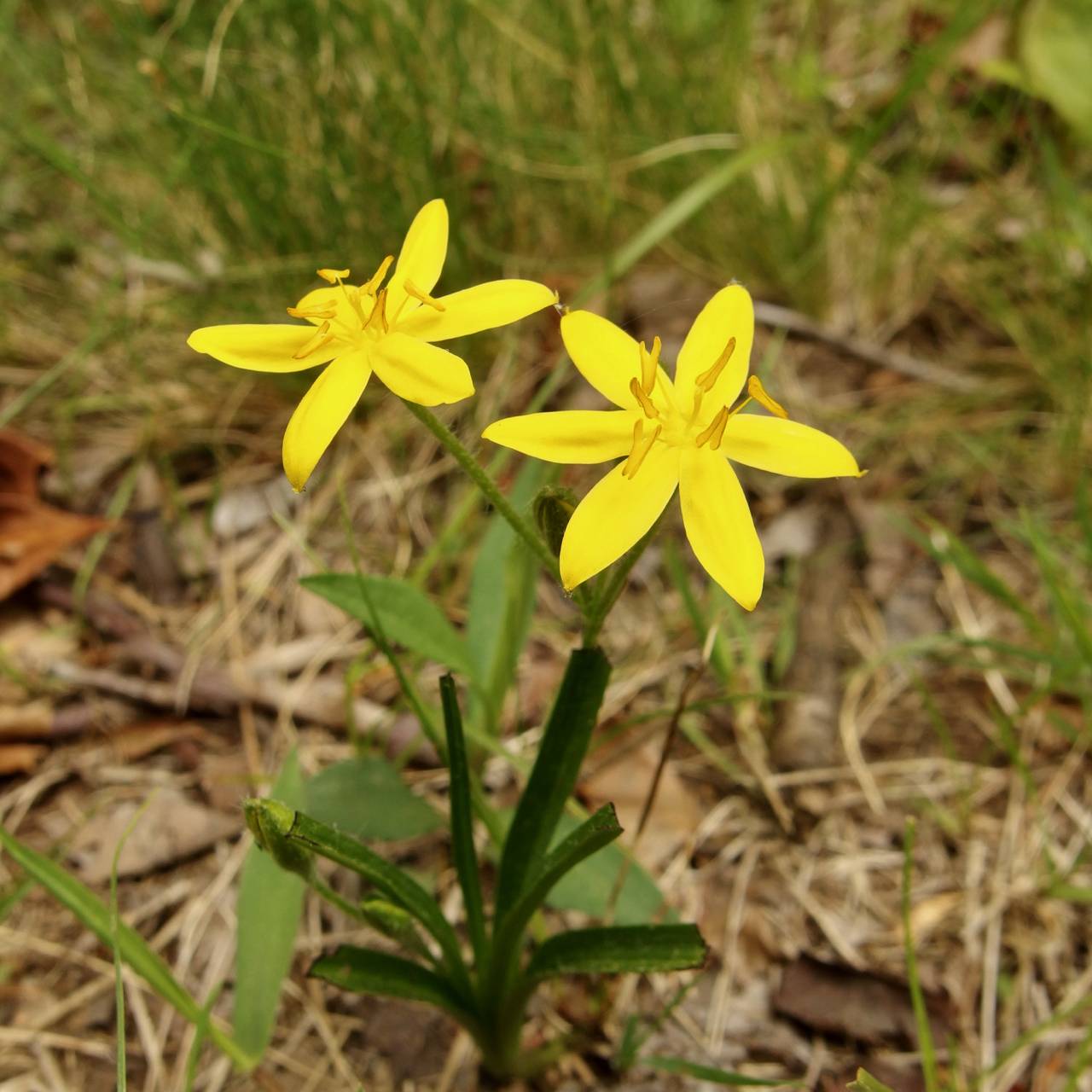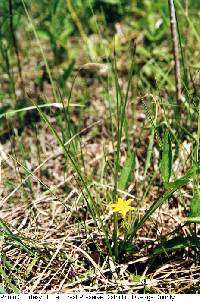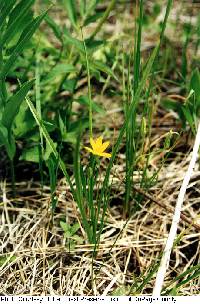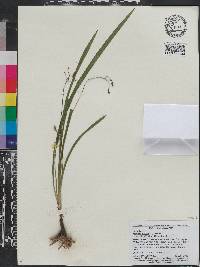|
|
|
|
Family: Hypoxidaceae
common goldstar
[Hypoxis micrantha Pollard, moreOrnithogalum hirsutum L.] |
Leaves (1-)2-5(-15) mm wide, soft, flexible, essentially glabrous or sparsely to densely pubescent. Scape (4-)5-17(-25) cm. Inflorescences umbellate, 1-5(-7)-flowered; proximal 2 flowers, when present, always paired; bracts (1-)2-10(-17) mm. Flowers: tepals (3-)6-10(-17) × 2-4 (-5) mm, shorter than pedicel, much longer than ovary; anthers 1.5-3.5(-4) mm; ovary obconic, (1-)2-4 × (1-)2-4 mm, densely pubescent; pedicel (6-)9-25(-30) mm, usually 2+ times longer than bracts. Seeds black, lustrous, (0.9-)1-1.5(-1.7) mm, coarsely muricate. Flowering spring--summer. Wet to dry woodlands and prairies; 0--1700 m; Man., Ont., Sask.; Ala., Ark., Colo., Conn., Del., D.C., Ga., Ill., Ind., Iowa, Kans., Ky., La., Maine, Md., Mass., Mich., Minn., Miss., Mo., Nebr., N.H., N.J., N.Y., N.C., N.Dak., Ohio, Okla., Pa., R.I., S.C., S.Dak., Tenn., Tex., Vt., Va., W.Va., Wis. Very rarely, specimens of Hypoxis hirsuta have cylindrical ovaries and/or bracts nearly equaling the pedicels. These specimens are recognized by the umbelliform inflorescence typical of H. hirsuta. The condition appears to be pathological and is associated with a lack of seed development.
Perennial herb flowering stem 4 - 25 cm tall Leaves: basal, to 0.6 m long and 1.5 cm wide, linear, grass-like, five- to nine-veined, and hairy. Inflorescence: an irregular umbel of two to six flowers raised on an upright stalk and sometimes subtended by small bracts. Flowers: on long stalks, yellow, irregular in size, 1 - 2.5 cm wide, star-shaped, with six tepals. Anthers six, arrowhead-shaped. Fruit: a 3 - 6 mm long, rounded, indehiscent capsule. Seeds shiny black and covered with small, sharp projections. Similar species: No information at this time. Flowering: late April to early July Habitat and ecology: Common in prairies and moist calcareous meadows. Occasionally seen in woodlands that are thinned out by fire. Occurence in the Chicago region: native Etymology: Hypoxis comes from the Greek words hypo, meaning beneath, and oxys, meaning sharp, in reference to the base of the seed capsule. Hirsuta means hairy. Author: The Morton Arboretum Lvs linear, pilose, 2-10 mm wide, to 6 dm at anthesis, the main ones 5-9-nerved; scape shorter than the lvs at anthesis, to 4 dm at maturity, bearing an irregular umbel of 2-6 fls on long pedicels; fls yellow, irregular in size, 1-2.5 cm wide; anthers deeply sagittate, the pollen-sacs divergent below; fr ellipsoid, 3-6 mm, indehiscent, containing several shiny, black, sharply muricate seeds 1-1.5 mm. Dry open woods; Me. to Man., s. to Ga. and Tex. Apr.-July. (H. leptocarpa) Gleason, Henry A. & Cronquist, Arthur J. 1991. Manual of vascular plants of northeastern United States and adjacent Canada. lxxv + 910 pp. ©The New York Botanical Garden. All rights reserved. Used by permission. |







